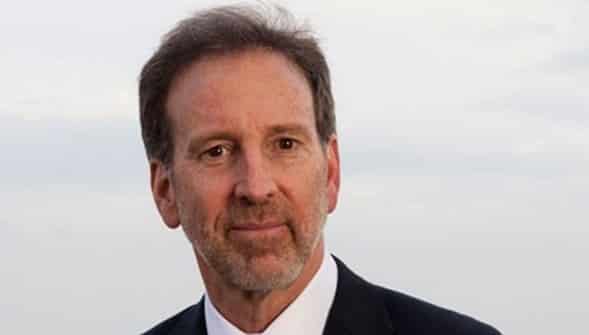By Antonio Garza
I’m writing from Texas where the past month was extremely challenging. The U.S. passed the milestone of 500,000 COVID-19 deaths and losses are continuing to mount from our rare winter storm.
Last month’s record cold temperatures led to a surge in energy demand as Texans attempted to heat their homes. The state’s grid was pushed to institute rolling blackouts, leaving at least 4.5 million residents without power for several days. Food supply chains were disrupted and parts of the state suffered water shortages. The cold temperatures caused more than 70 deaths nationwide. One estimate puts uninsured damages across states at more than $18 billion, and we’re still trying to understand the full impact of the storm.
The crisis in Texas highlights the degree to which Mexico depends on the U.S. for energy. Roughly 60% of Mexico’s electricity is produced with natural gas and Mexico received 96% of its natural gas from the U.S. in 2019— mainly from Texas. Last month, frozen natural gas pipelines coupled with the surge in U.S. demand left nearly 5 million people in northern Mexico without power. These outages in factories and businesses across Mexico’s industrial region led to an estimated $2.7 billion in losses.
This moment offered a window of opportunity to push for greater binational energy cooperation, yet both sides appeared shortsighted in their response. On Feb.17, Gov. Greg Abbot sent a letter to the Railroad Commission of Texas directing that “all sourced natural gas be made available for sale to local power generation opportunities before leaving the state effective through February 21st.” This move could unnecessarily impact Texan natural gas exports and have profound diplomatic repercussions. President Andrés Manuel López Obrador blamed the U.S. for the outages and renewed his call for Mexico’s energy independence.
Mexico’s power outages illustrate the importance of private investment and alternative energy sources, both pillars of the 2013 energy reform. López Obrador has tried to reverse aspects of the reform through regulatory changes that give preference to state-owned companies over private renewable plants. However, Mexico’s Supreme Court recently ruled that these shifts are anti-competitive. Although López Obrador has enough support in Congress to pass a bill cementing these changes, analysts predict it would be overruled by the Supreme Court.
The next few months will set the tone for the rest of López Obrador’s single six-year term. The June midterm elections will determine if his coalition holds onto majorities in both houses of Congress, and the president must maintain his lower-house supermajority to amend the constitution. So far, the opposition parties have struggled to counter López Obrador’s unwavering popularity. Yet, his coalition will likely take a slight hit at the ballot box due to public security concerns and the economy.
After a steep economic recession in 2020, Mexico faces a slow recovery. Analysts forecast that GDP will recuperate slightly in 2021 but not rebound to 2018 levels until 2024. López Obrador has refused to ramp up spending during the pandemic, leading to enduring consequences for households and businesses alike. The pandemic impacted the vast majority of businesses, yet fewer than 10% received government aid. Many businesses have struggled to stay afloat, and one in five of Mexico’s small businesses already closed their doors for good. As of mid-February, Mexico had 800,000 fewer jobs than it did before the pandemic.
Due to political fallout over the economy, López Obrador may temporarily recalibrate on business issues. He stalled on a subcontracting ban, after receiving warnings that it would hamper investment. Yet, his administration’s posture on contracts, use of public consultations for policy decision making, and Mexico’s weak rule of law will continue to deter investors.
On Feb. 8, López Obrador resumed his duties after a two-week hiatus to recover from COVID-19. He has continued to downplay the pandemic, at a time when Mexico has the third-highest number of COVID-19 deaths in the world and his coronavirus czar just tested positive. His administration has focused efforts on its vaccination strategy, and Mexico was the first Latin American country to receive shipments. Yet, vaccine plans have delayed due to mishandling and a worldwide production shortage.
Mexico has struggled to secure sufficient vaccine doses. Last month, the Mexican foreign minister criticized wealthy countries for “hoarding” vaccinations before the UN Security Council. According to Bloomberg’s vaccine tracker, roughly 0.9% of the Mexican population has received one dose. In contrast, the Biden administration has ramped up vaccination efforts and 13 percent of the U.S. population has received the first shot.
In the U.S., President Biden has moved forward with his agenda. Last week, Democrats introduced a bill to Congress to overhaul the U.S. immigration system. The U.S. Citizenship Act of 2021 proposes an eight-year path to citizenship for an estimated 11 million undocumented immigrants, including 5 million Mexicans. It would also increase investment in infrastructure at ports of entry and funding for immigration judges. Attempts at immigration reform have failed over the past two decades, and it will be an uphill battle to get Republicans on board.
Antonio Garza is former U.S. ambassador to Mexico and former Cameron County judge.





